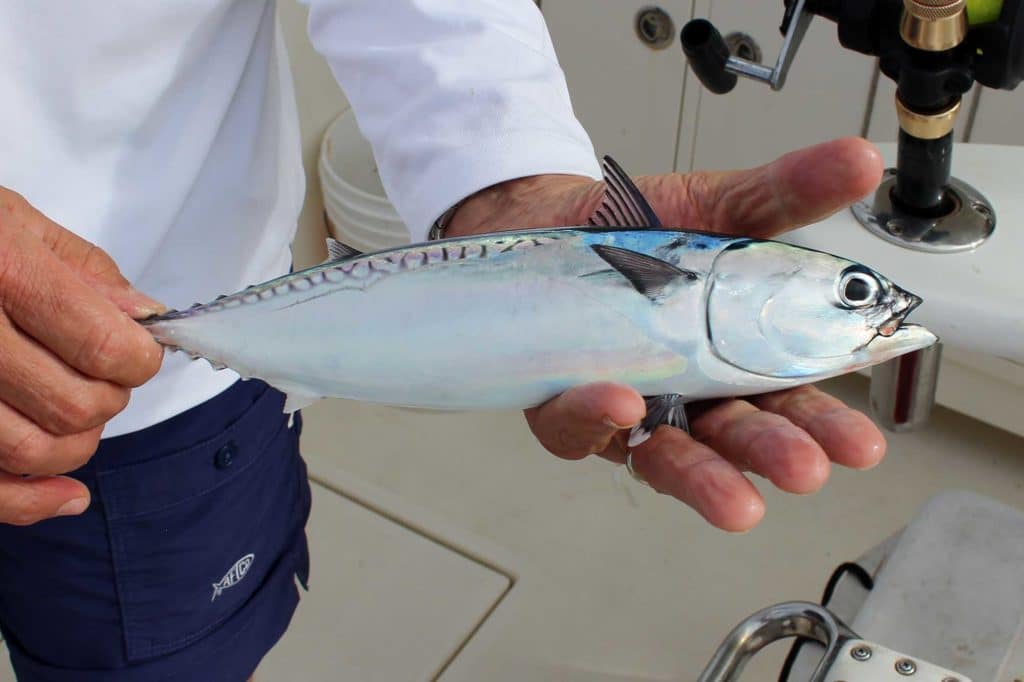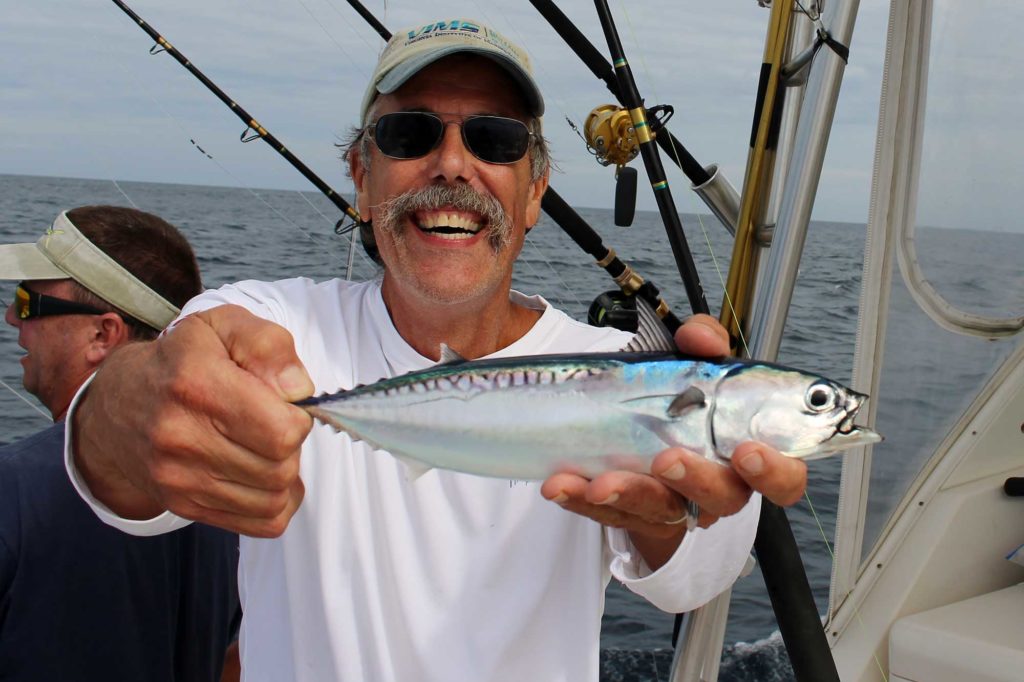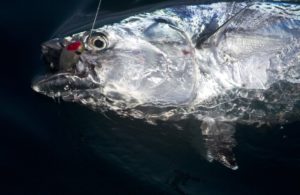
In 25 years of stomach analyses of marlin and other pelagic game fish at mid-Atlantic tournaments, John Graves, Ph.D. — past chair of the Virginia Institute of Marine Science Fisheries Department and now serving his 12th term as chair of the U.S. Advisory Panel to ICCAT — has learned that bullet tunas and frigate mackerel are the dominant prey species. Similar analyses from the Big Rock Tournament in North Carolina indicate that these same species are the top prey for wahoo and blue marlin. Other, international studies of these fishes have shown similar results, further highlighting their importance in the offshore ecosystem.
Those small tunas, of the genus Auxis, are too important to lack protection, Graves says, yet the species remain totally unprotected off the East Coast. Graves’ advice was influential with the Mid-Atlantic Fishery Management Council when we developed our unmanaged forage amendment, bringing some of the region’s most ecologically important species under management.
In too many instances, I have watched efforts to protect important forage species succumb to the argument that managers lack data or a sufficient model to adequately evaluate and adjust for ecosystem tradeoffs associated with low-trophic-level fish. In many cases, establishing robust protections for keystone forage fish species does not have to be that complicated or elusive. In the case of unmanaged species, managers can use basic risk assessments to identify species of high ecological importance that are also at risk of potentially unsustainable development in the absence of any management measures.
As a case in point, chub or “tinker” mackerel have also evolved as an essential prey species in the Mid-Atlantic, and were previously unmanaged. They are now significant as prey in our early-season yellowfin catches southeast of Virginia Beach, and their concentrations just inside or over the edge hold white marlin like Velcro during our summer fishery. Chub mackerel were unprotected but not historically subject to any significant directed fisheries. That changed in an instant in 2013, when large commercial trawlers directed on them during a period of low squid abundance, and landings went from insignificant quantities to more than 5 million pounds in a single year. That sudden spike in directed fishing occurred in the absence of any science, management plan, or consideration by the regional fishery council about the trade-offs and risks to existing fisheries associated with a new, unmanaged fishery for an important forage species.

When the unmanaged forage amendment was completed and approved, 14 previously unprotected taxa comprising over 50 species — including sandeels and Spanish sardines — were designated as Ecosystem Component species, and afforded basic protections in the form of commercial trip limits. The trip limits were set with advisory input at levels high enough to accommodate the existing fisheries in the region, thereby avoiding negative social or economic impacts, and low enough to prevent directed fisheries from developing on these ecologically important species. Further development of these fisheries would require exempted fishing permits and consideration by the agency and regional council — a more orderly alternative than the unmanaged, free-for-all situation that it replaced. The amendment also established the chub mackerel fishery within its recently expanded footprint, with annual quotas set by the council and agency.
Despite the ecological importance of Auxis species to the offshore ecosystem in our region, NMFS ultimately declined our council’s request to protect them as Ecosystem Component species, principally due to the fact that they were not prey for our council’s managed species. Fortunately — and to their credit — the South Atlantic Fishery Management Council has taken up the mantle of protecting Auxis. They have a clean shot: Auxis are the #1 prey species in wahoo diets in their region, and they can request their designation as an Ecosystem Component species in their Dolphin and Wahoo plan.
Read Next: Tunas of the World — An Illustrated Guide
Sometimes it can be relatively easy to implement basic, common-sense protections for ecologically essential prey species without disrupting existing fisheries. This is a great opportunity to achieve just such an outcome for bullet tunas and frigate mackerels for the benefit of wahoo and blue marlin, and the offshore fisheries they support, up and down the East Coast.

As we learned in the Mid-Atlantic, large-scale fisheries for unmanaged small pelagics can develop in an instant. If you want to support designating bullet tunas and frigate mackerels as Ecosystem Component species, and implementing basic protections for these foundational species in our offshore ecosystem, the South Atlantic Fishery Management Council has posted a link for comments (due May 16, 2019, 5 p.m.) and webinar participation.
About the Author:
Rick Robins is an avid marlin fisherman. He is a marine fisheries consultant and seafood processor. He served as chair of the Mid-Atlantic Fishery Management Council from 2008 through 2016 and served as an Associate Member of the Virginia Marine Resources Commission from 2004 through 2012.








